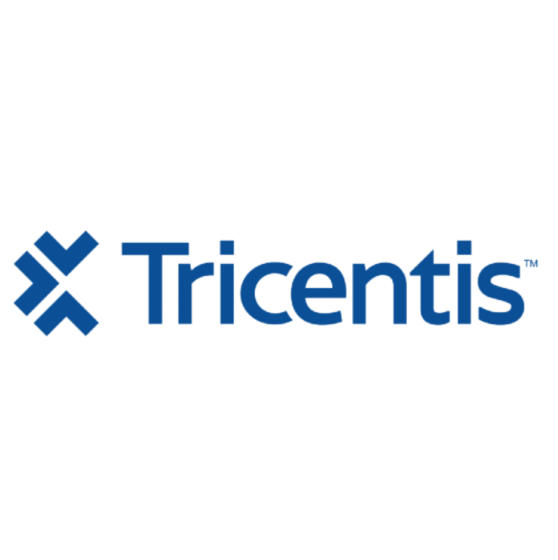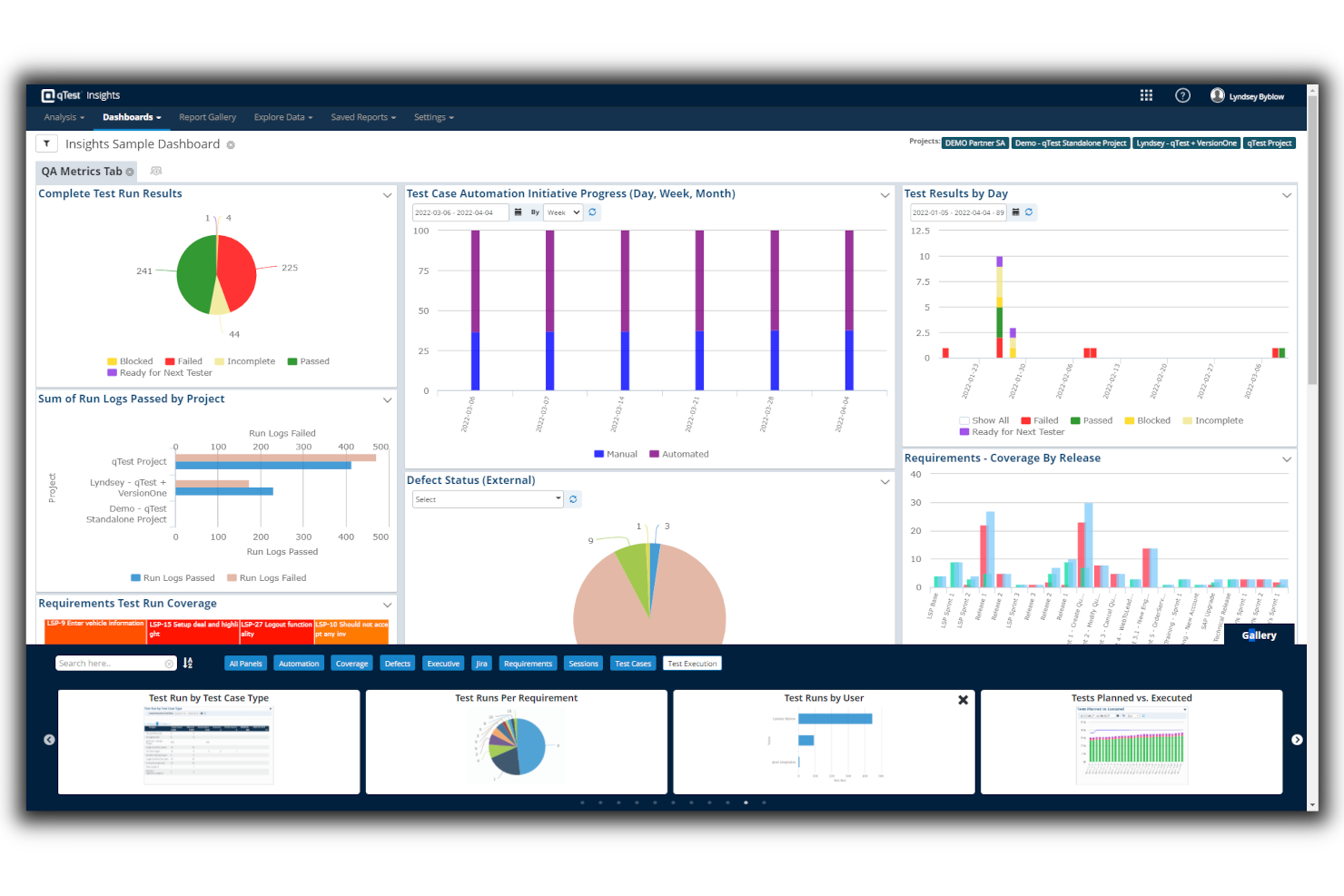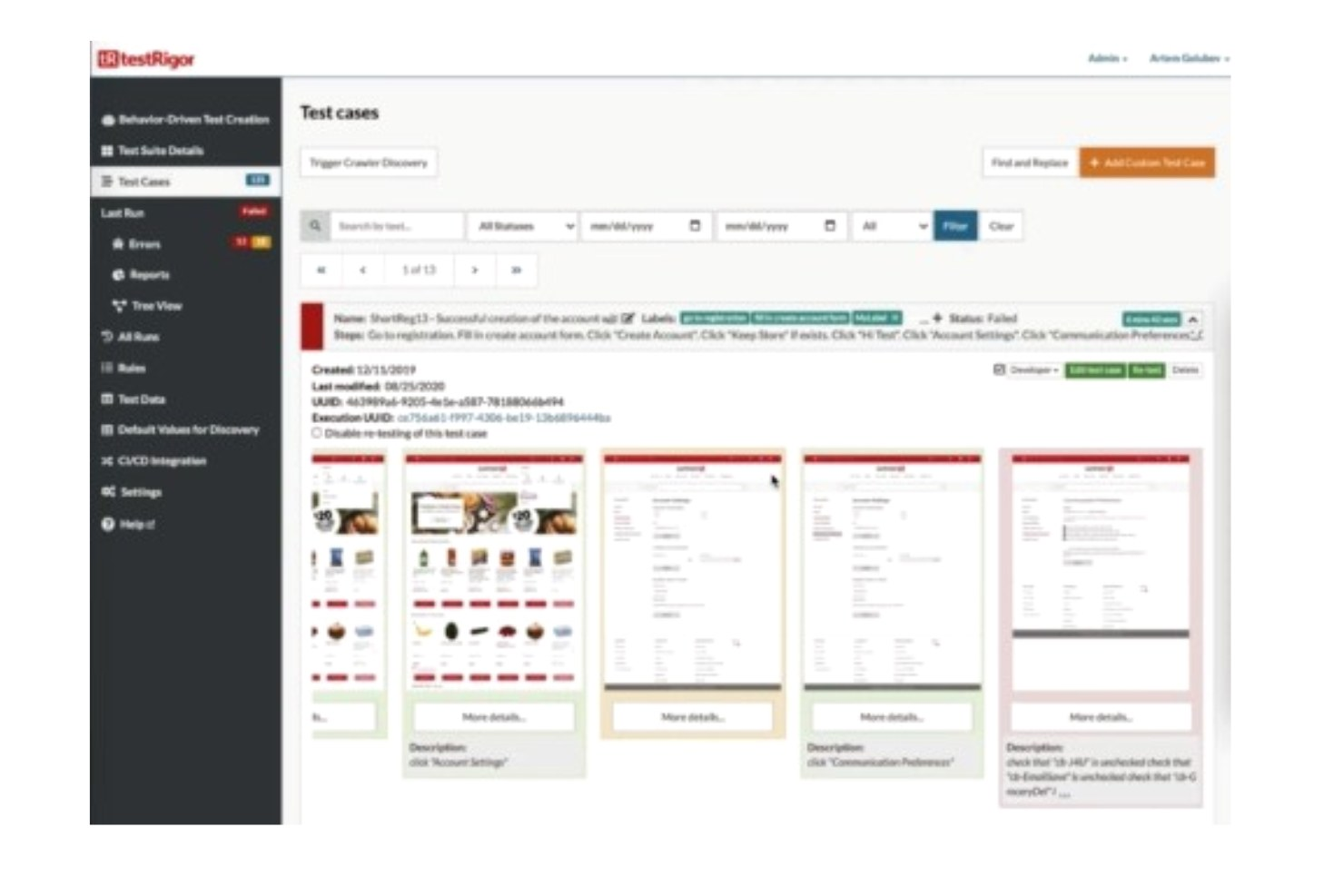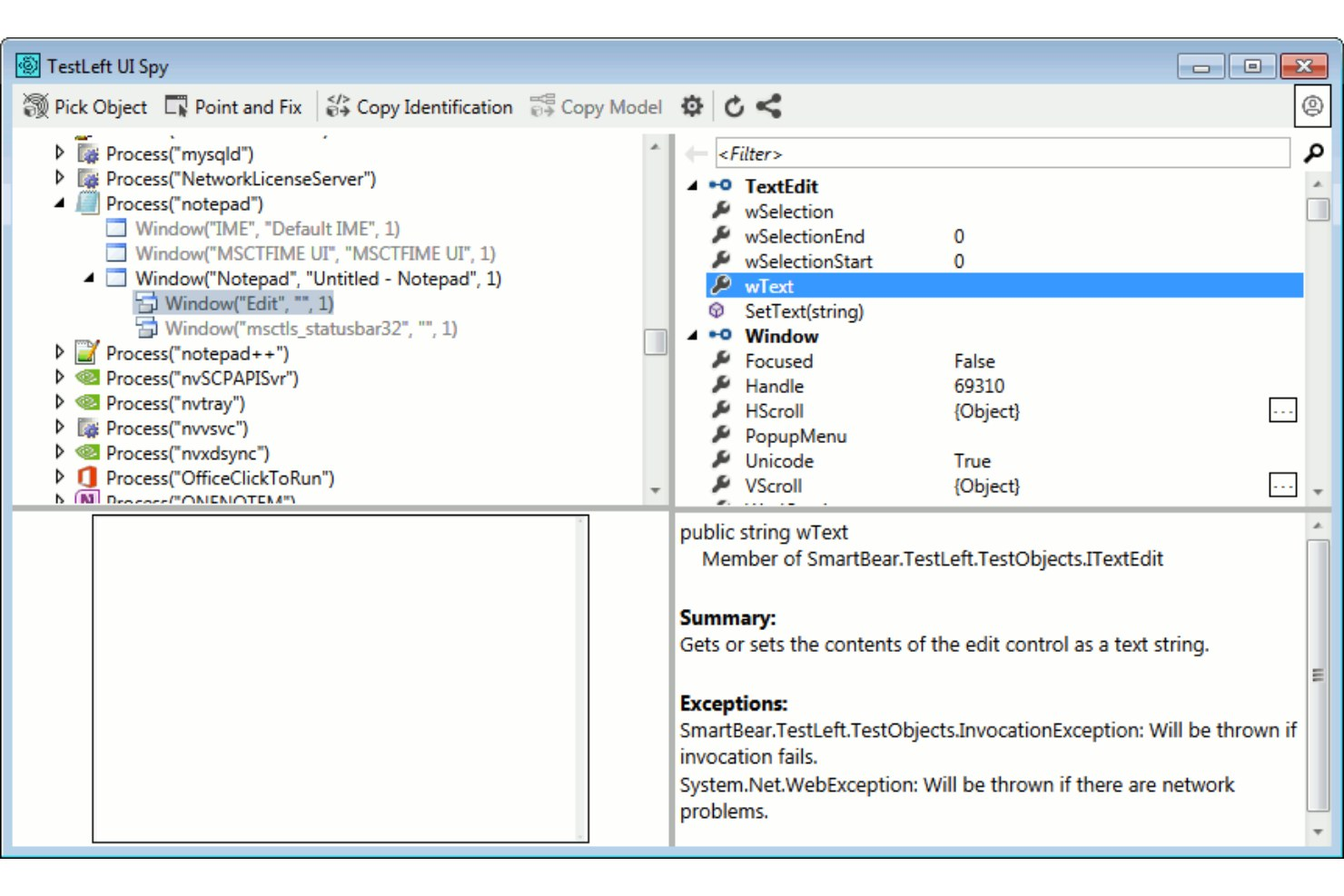10 Best BDD Software Shortlist
Here’s the list of the best tools that I’ll cover in this article.
With so many different BDD testing tools available, figuring out which is right for you is tough. You know you want to bridge the communication gap between business stakeholders, developers, and testers but need to figure out which tool is best. I've got you! In this post I'll help make your choice easy, sharing my personal experiences using dozens of different BDD testing software with various teams and projects, with my picks of the best BDD testing tools.
What Are BDD Testing Tools?
BDD testing tools are software used in Behavior-Driven Development. These tools enable teams to define software behavior using simple, natural language descriptions. They translate these descriptions into automated tests, ensuring software functionality aligns with specified behaviors.
The benefits of BDD testing tools include improved communication between technical and non-technical team members, fostering better understanding and collaboration. They ensure that development aligns closely with business needs and user requirements, leading to higher quality software. Additionally, these tools facilitate early detection of issues and efficient resolution, enhancing the overall development process and product outcome.
Overviews Of The 10 Best BDD Testing Tools
Here’s a brief description of each BDD testing tools to showcase each tool’s best use case, some noteworthy features, and screenshots to give a snapshot of the user interface
qTest by Tricentis is a test management solution for agile development testing that offers a BDD solution for Jira software users. The enterprise BDD solution has a built-in Gherkin editor that enables users to build, copy, or connect Cucumber scenarios and features directly in Jira. The auto-complete feature can be used to reuse previously implemented outlines or steps. Developers, testers, and product owners can store, manage, and modify feature files within the Jira software using this platform.
Tailored for DevOps teams, this test management suite offers a host of functionalities to test websites, applications, and other digital products. Users can design and executing custom test workflows and capture feedback from other testers using the software. Teams can create, edit, update, and connect feature files directly to any issue type on the interface of the Jira software.
The software can be connected to open source and proprietary tools. Native integrations include CA Agile Central Rally, Cucumber, Jenkins, Jira, Selenium, and Version One.
Pricing for Tricentis qTest starts from $1,200 per user/year, billed annually, and a 14-day free trial is available.
TestRigor allows testers to use plain language to quickly create complex, yet stable end-to-end tests about 15X faster. It is enhanced by its AI-powered system geared to reduce both manual input and test maintenance to a bare minimum. TestRigor provides a Chrome extension to speed-test and simulate how normal people interact with mobile and web applications by autonomously generating tests that reflect your end users’ behavior.
TestRigor allows development teams to deploy products faster by applying more stable tests with 95% less maintenance than most comparative tools. It does this without requiring users to have deep technical skills yet provides up to 90% test coverage. As a result, it allows teams to focus on improving their product, not code.
TestRigor strives to provide a better, more improved approach to testing. So, whether it’s unit, UI, regression, or exploratory testing, TestRigor allows you to execute it from the end users’ point of view. It also provides integrations to make it seamless and easy to incorporate TestRigor into your existing workflow.
Some of these integrations include apps such as Jira, TestRail, Gitlab, Zephyr, Jenkins, AWS, and many more.
TestRigor is free and open-source. However, it also offers Private and Enterprise versions. The Private tier costs $900 per month and comes with a free trial. Pricing for the Enterprise tier is available upon request.
AssertThat is a BDD collaboration tool that integrates natively with Jira, designed to facilitate the discovery, definition, and execution of BDD requirements directly within the Jira platform. It provides capabilities for creating advanced Gherkin scenarios, integrating with CI/CD pipelines, and delivering comprehensive traceability reports, positioning it as a great choice for teams seeking BDD solutions that work within the Atlassian ecosystem.
AssertThat works excellent for BDD testing because of its native integration with Jira, which helps maintain a cohesive workflow between project development, management, and testing. Its standout features include the ability to create and manage Gherkin scenarios within Jira and its integration with continuous integration and delivery pipelines, which supports a more efficient BDD process.
Users can define BDD requirements directly within the platform to foster collaboration by linking BDD features and scenarios to Jira issues. It includes a Gherkin editor with autocomplete functionality to aid in writing BDD scenarios and supports integration with CI/CD pipelines and Cucumber for automating these scenarios. It also supports Cucumber, enabling the execution of automated tests written in Gherkin. The software can also integrate with GitHub and through command line interfaces, allowing developers to incorporate AssertThat into their existing workflows.
AssertThat is free to use through the Atlassian Marketplace for up to 10 users. Pricing starts from $2.50 for the first 100 users.
JDave is a Java behavior-driven development framework that runs on JUnit. It is a more developer-oriented framework than other typical BDD test automation platforms.
JDave operates differently from story runner frameworks like Cucumber in the sense that it is a specification engine, and therefore, each scenario depicts the behavior of a class object.
JDave is a lightweight tool that nonetheless draws heavily from RSpec as a BDD, especially in the use of a domain-specific language and with tight integration with its affiliated language. Likewise, JDave encourages writing the smallest test case possible to match what is needed in a program.
In addition to using the JUnit adapter to launch its specifications, JDave integrates with the mocking framework, JMock2 to allow users to mock their objects. To boost users' ability to create flexible expressions of intent, JDave uses Hamcrest as a matching library.
JDave is free to use.
Blends Automated tests in Java with Flexible and Attractive Documentation
Concordion is an open-source platform that blends software delivery and writing automated tests. Concordion is designed as a collaborative tool to help various stakeholders ranging from developers, analysts, and testers to build quality software products through flexible documentation.
It is simple and easy to use, with a clean concept facilitated by an attractive stylesheet makes it easy to read. Concordion empowers users to create beautiful living documentation with features that leverage the power of HTML. Some of these include the ability to add images, hyperlinks, tables, and indexes to make your pages more useful with clear results.
Concordion also provides technical users with fundamental development features like exception handling through stack traces. With its extensible API, it allows users to powerfully customize its core functionality. For example, by adding screenshots to output, displaying logging information, or even using spreadsheets as specifications.
Since it is used with Java, Concordion integrates directly with JUnit. However, it can also be used with other Java-based IDEs like Eclipse, NetBeans, and IntelliJ IDEA.
Concordion is free to use.
BeanSpec allows users to specify, check, and summarize the behavior of a component using an easy to follow, narrative style. This makes it simple to use BeanSpec to handle complex specifications with declarative language.
It is a Java-based solution, which makes it amenable to be used with Java-based IDEs like Eclipse and NetBeans. BeanSpec also allows you to generate internal reports at the end of test execution runs.
BeanSpec is free and operates under the Apache V2.0 license.
TestLeft is a test automation tool built for developers and advanced testers. It is easy to fully integrate TestLeft into your favorite IDE, making it convenient to execute functional unit and UI tests while writing code. TestLeft embraces the shift left philosophy of DevSecOps security, which encourages testing much earlier in the product lifecycle, which makes it easier to detect and fix errors.
TestLeft seamlessly integrates with your DevOps ecosystem to run tests for web and desktop applications. To facilitate quick functional UI testing, it provides features like object recognition and automatic application model generation.
TestLeft provides support for unit testing frameworks and templates such as NUnit, TestNG, and MSTest. It has robust support for popular IDE such as Visual Studio, including Java IDEs such as IntelliJ and Eclipse. As such, it helps to boost developers' productivity since they don’t have to leave the familiar environment of their favorite IDE to run tests.
TestLeft has two pricing options. The licensing for its Node-locked and Floating subscription are priced at $1,119 per year and $2,249 per year respectively.
FitNesse is an open source, fully-integrated, yet minimalist test management platform. It uses a wiki-based server with a rich text editor to provide text-based wiki pages. FitNesse is easy to set up with a low barrier to entry and a quick learning curve. As a result, it is suited for business analysts, management, and support staff, in addition to testing professionals.
FitNesse is straightforward to debug and plays with different environments and programming languages such as Java, Python, and C#. Its breadth of use ranges from UI, web, and even electronic components. FitNesse also permits both running automatic and manual tests.
FitNesse can be used with JUnit or NUnit, andis able to act as a collaboration tool with external APIs. The tool runs deterministic tests for a given requirement so it provides clarity to the user on whether the test succeeded or failed. It provides a natural complement to xUnit-based testing.
FitNesse is free to use.
SpecFLow is an open-source BDD framework built for the .NET platform. Instead of limiting testers to isolated QA phases, SpecFlow allows them to apply their expertise throughout the software development cycle. In addition to writing new test cases, SpecFlow makes it convenient and simpler to handle the maintenance and extensibility of existing automated tests.
SpecFlow empowers developers to maintain better, modular code by separating test automation from their specification and feature files. Its Living Documentation seeks to provide users with a central place to combine test automation results with test documentation. That way, it can be used as a source of truth to foster a better understanding among the development team.
SpecFLow enables organizations to build more scalable tests while maintaining high-quality testing standards. It also shines by striving to turn test automation into a more collaborative, team effort.
SpecFlow is free to use.
Cucumber is an open-source BDD tool that simplifies test case writing for non-technical people. Cucumber is one of the most widely adopted tools for BDD. It seeks to provide a single source of truth for BDD by merging both test and specification documentation into a cohesive, comprehensive unit.
Cucumber allows you to check the accuracy of executable feature specifications against runnable code in almost all modern development languages, tools, and stacks. Some of these include JavaScript, Java, .NET, Ruby, and so on. As a result, Cucumber is ideal for anyone involved in the software development lifecycle, such as developers, project managers, software architects, and QA teams.
To facilitate BDD, Cucumber uses a Gherkin syntax that is very similar to normal English. This reduces the learning curve for new users and allows almost anyone to write concise descriptions of test scenarios. Cucumber also allows you to embrace test automation with Selenium, and API calls.
Cucumber integrates seamlessly with office productivity apps such as Jira, Trello, and Slack. Cucumber’s Git integration ensures a seamless up-to-date document, which provides a consistent, single source of truth. It also has integration support with popular integrated development environments (IDEs) like IntelliJ, and Visual Studio Code. The platform can be used for desktop, web, and client-server applications.
Cucumber offers two products: Cucumber Open and CucumberStudio. CucumberStudio provides in-depth and frictionless collaboration between teams. For instance, it enables technology and business teams to collaborate on acceptance criteria.
Cucumber Open is free while pricing for CucumberStudio is available upon request.
The Best BDD Testing Tools Summary
| Tools | Price | |
|---|---|---|
| Tricentis qTest | Plans start at $1,200 per user/year | Website |
| testRigor | From $900/Month | Website |
| AssertThat | From $2.50/User/Month | Website |
| JDave | Free To Use | Website |
| Concordion | Free To Use | Website |
| BeanSpec | Free To Use | Website |
| TestLeft | From $1,119/year | Website |
| FitNesse | Free To Use | Website |
| SpecFLow | Free To Use | Website |
| Cucumber | Pricing upon request | Website |

Compare Software Specs Side by Side
Use our comparison chart to review and evaluate software specs side-by-side.
Compare SoftwareComparison Criteria
What do I look for when I select the best BDD testing tools? Here’s a summary of my evaluation criteria:
- User Interface (UI): I look for BDD tools with user interfaces that provide intuitive and easy navigation elements. To enhance user experience, the best BDD tools have UI interfaces that are well-designed, uncluttered, clean, and user-friendly.
- Usability: Software tools, for the most part, are designed with productivity in mind. Therefore, I looked for how well a BDD tool allowed users to accomplish core testing tasks with relative ease. While it is desirable for them to have a rich feature-set, the functionality should also have a low learning curve.
- Integrations: BDD tools are used by software development teams so they should the ability to support and integrate a wide variety of tools in that ecosystem. In addition to testing apps, their APIs ought to provide compatible support for continuous integration and continuous delivery (CD/CI) pipelines.
- Value for $: Price and affordability are important considerations for most customers. However, cheaper rarely ever means better. So, I evaluate the value for money associated with a BDD tool by weighing its cost with the corresponding benefits it provides.
BDD Testing Key Features
These are the key features BDD testing tools need to remain competitive.
- Wide Coverage of User Stories: The ability to implement user stories defined through scenarios that communicate the desired behavior in a shared language, typically that of the business domain. This helps to explain test scenarios to stakeholders while empowering testers to write test scripts in step definition files.
- Clarity and Expressiveness of Scenarios: Provide the ability to write user stories in a ‘given-when-then’ format that is characteristic of the BDD approach, typically with Gherkin syntax that focuses on the outcome being tested or developed.
This “specifications as documentation” approach should allow expressiveness of functionality so the gap between technical and business teams is narrowed. Testers should be able to write scenarios or acceptance tests by describing the behavior of the system from the users' perspective. - Automation of Test Scenarios: In addition to manual testing, the best BDD tools have built-in automation to reduce errors and run test scripts with minimal human intervention. Most are now moving to cutting-edge AI-powered test automation to easily detect patterns along with performing deep data analytics.
- Scalability: The bane of most software testing tools is their inability to cater to significant increases in testing volume. In addition to facilitating acceptance tests through automation, the best BDD tools are able to help teams scale their testing pace, volume, and velocity.
- User-friendliness: Since BDD is designed to make acceptance tests and their design more accessible, BDD tools should be intuitive and simple for newcomers and experts alike. This includes providing human-readable descriptions of software requirements through Gherkin that established a shared understanding for the whole team.
Conclusion
Behavior-Driven Development is becoming an important aspect of modern software development. It is a revolutionary approach that seeks to make the software process more egalitarian through the usage of a shared language of communication.
The 10 best BDD tools allow users to implement acceptance testing, primarily by defining software and application behaviors in a logical, broadly shared language that users can understand.
Please, subscribe to The QA Lead to get up-to-date information on podcasts, tool reviews, how-to guides, deals, updates, and product exclusives.




















